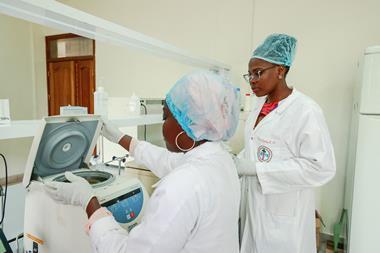Since the oral contraceptive pill was introduced in the 1960s, the range of contraception methods available to women has expanded and helped to avoid unplanned pregnancies. With freedom of choice, they have been empowered to pursue opportunities in work or higher education, and escape the social stigma and medical risks of having an abortion. Still, when any contraception fails, it’s the woman who bears the brunt of that failure.
And while women have benefitted from the autonomy that contraceptives bring, they have also shouldered more of the burden of responsibility. There are the logistics of medical appointments, in some countries there’s a financial cost and for those using an oral contraceptive, they must remember to take a daily pill. Then there are side-effects: acne, headaches, mood swings, weight-gain, decreased libido and bloating are all common with female hormonal contraception. Moreover, rare but more serious side-effects of the combined oral contraceptive pill, for example, include blood clots and a heightened risk of breast cancer.
The prospect of male contraceptive drugs, as we detail in our feature, may therefore leave some of our female readers rolling their eyes. One reason for this disgruntlement lies in the apparent double standards when it comes to the concept of risk. Given that women can die from pregnancy and childbirth, the risks associated with female contraceptives are generally considered to outweigh death. But there’s no health risk for a man when their partner gets pregnant. This fact coupled with the ‘do no harm’ principle in medicine means regulatory bars for safety and tolerance are expected to sit much higher for male contraceptives than they have ever done for female ones. It helps explain why progress in the field has been glacial and the pharmaceutical industry has been reticent to commit.
Several researchers are therefore advocating to shift risk assessments from an individual to a shared model. In 2020, John Amory and colleagues suggested that such an ethical framework could be ‘grounded in care ethics, which conceptualises humans as unassailably interdependent and interconnected’.1 They define shared risk as the sum of the risks to both members of a couple associated with contraceptive use by either or both members, and is compared to the risk of unintended pregnancy to the couple as a whole.
Were regulators to adopt a shared risk model, it could help reshape societal attitudes surrounding responsibility and fairness in reproductive health. As it stands, the regulatory uncertainty surrounding male contraceptives seems doomed to prolong the gender inequities prevalent in family planning.
References
1 G D Campelia et al, Contraception, 2020, 102, 67 (DOI: 10.1016/j.contraception.2020.05.014)

















No comments yet